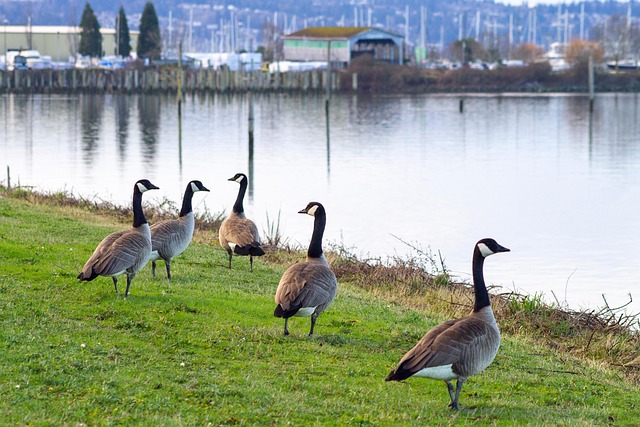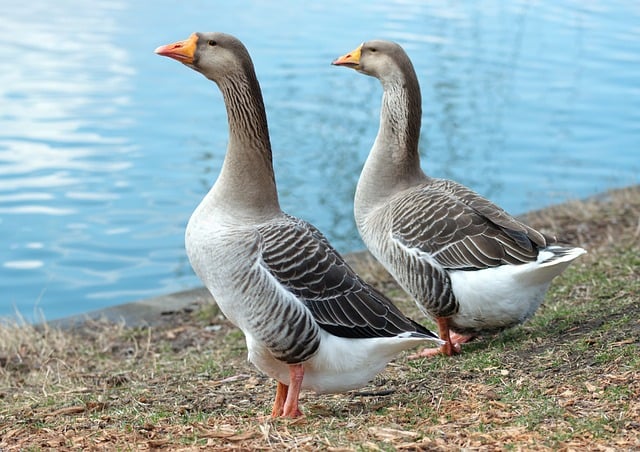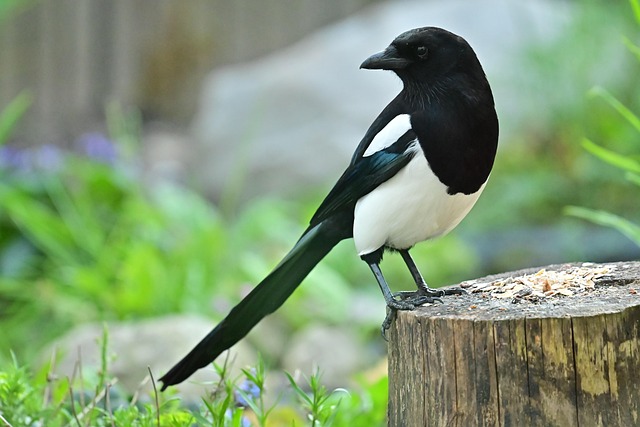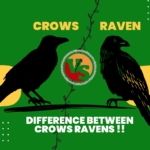The Canadian goose, scientifically known as Branta canadensis, And Canadian geese, is a graceful and iconic bird of North American origin. Famous for its black head and neck, white chinstrap, and brownish-gray body, it is one of the most well-recognized waterfowl in the world. This bird species is very adaptable and exists in varying regions from lakes and wetlands to urban parks and agricultural fields. Known for their V-shaped flight formation and loud honking calls, the Canadian goose has a significant importance in ecological systems, taking into account seed dispersion and prey itself. In this article, we will know in detail about the life, age, height, weight, diet, habitat, family, sounds, and other interesting facts related to the life of the Canadian Goose.
Know Everything About Canadian Geese

| Attribute | Details |
|---|---|
| Scientific Name | Branta canadensis |
| Common Name | Canadian Goose / Canadian Geese |
| Family | Anatidae |
| Order | Anseriformes |
| Class | Aves |
| Kingdom | Animalia |
| Phylum | Chordata |
| Diet | Herbivorous (grass, seeds, grains, aquatic plants) |
| Lifespan | 10-24 years in the wild |
| Size | 30-43 inches (76-110 cm) in length |
| Wingspan | 4.2-5.6 feet (1.3-1.7 meters) |
| Weight | 6.6-19.8 lbs (3-9 kg) |
| Plumage Color | Brown-gray body, black head/neck, and white chinstrap |
| Native Range | North America |
| Migratory Range | From Canada/Alaska to southern U.S. and Mexico |
| Habitat | Lakes, wetlands, rivers, ponds, grasslands, and urban parks |
| Nesting Site | Ground, near water, hidden in vegetation |
| Clutch Size | 4-9 eggs per clutch |
| Incubation Period | 25-30 days |
| Fledging Period | 6-9 weeks after hatching |
| Predators | Foxes, coyotes, raccoons, large birds of prey |
| Flight Formation | V-shaped |
| Call | Loud honking |
| Behavior | Territorial, social, and highly adaptive |
| Breeding Season | April to June |
| Egg Color | White or slightly off-white |
| Mating System | Monogamous (mate for life) |
| Molting | Once a year, during summer |
| Major Threats | Habitat loss, hunting, and pollution |
| Role in Ecosystem | Seed dispersal and prey species |
| Conservation Status | Least Concern |
| Average Flying Speed | 40-55 mph (64-89 km/h) |
| Altitude During Migration | Up to 9,000 feet |
| Social Structure | Live in flocks, except during nesting season |
| Parental Care | Both parents care for the young |
| Adaptability | Thrives in both wild and urban environments |
| Symbolism | Seen as a symbol of loyalty, teamwork, and perseverance |
| Interesting Behavior | Aggressive defense of nests |
| Preferred Food | Grass, aquatic vegetation, grains, and small invertebrates |
| Notable Features | Strong flying ability and recognizable honking sound |
| First Description | Described by Carl Linnaeus in 1758 |
| Climate Preference | Temperate to subarctic |
| Wintering Grounds | Southern U.S. and parts of Mexico |
| Population | Estimated at over 7 million worldwide |
| Vocalization | Communicates with various honks and calls |
| Group Name | Gaggle (on land), Skein (in flight) |
| Sexual Dimorphism | Minimal; males slightly larger |
| Feather Waterproofing | Uses oil gland near tail for waterproofing |
| Chick Color | Yellow-gray at birth |
| Age of Maturity | 2-3 years |
| Longest Migration Distance | Over 3,000 miles |
| Typical Behavior | Grazing and swimming |
| Egg Incubation Temperature | 37-38°C |
| Nesting Material | Grass, moss, leaves, and down feathers |
| Vocal Calls During Flight | Used for coordination and maintaining flock structure |
| Major Flight Seasons | Spring and Autumn |
| Mating Rituals | Includes head bobbing and honking |
| Color Vision | Yes, can detect UV light |
| Human Interaction | Often seen in urban parks |
| Adaptation to Urban Areas | Feeds on lawns and golf courses |
| Annual Molting Season | Mid-summer (flightless during this period) |
| Chick Development | Fully feathered in 8-10 weeks |
| Favorite Grains | Wheat, corn, and oats |
| Breeding Success Rate | High in protected areas |
| Migration Signals | Changes in daylight and temperature |
| Protection Status | Covered under the Migratory Bird Treaty Act |
| Nest Location Factors | Close to water, hidden from predators |
| Parental Communication | Soft clucking calls |
| Lifespan in Captivity | Up to 30 years |
| Role in Agriculture | Considered pests in some farming regions |
| Eggshell Thickness | Thick to protect against predators |
| Population Trends | Increasing due to adaptability |
| First-Year Survival Rate | Approximately 50% |
| Unique Adaptations | Ability to navigate using Earth’s magnetic field |
| Human-Wildlife Conflict | Common in urban areas |
| Vocalizations During Nesting | Alerts to predators |
| Migration Timing | Varies by latitude |
| Preferred Breeding Habitat | Wetlands and open grasslands |
| Avian Diseases | Susceptible to avian influenza |
| Average Egg Weight | 175 grams |
| Energy During Flight | High metabolic activity |
| Symbolism in Culture | Represents unity and family bonds |
| Conservation Challenges | Habitat degradation |
| Flight Strength | Powerful and efficient |
| Impact on Ecosystem | Helps maintain wetland health |
| Typical Flock Size | 10-100 birds during migration |
Also Read: Difference Between Crows And Ravens
10+ Unknown Facts About Geese Bird
- Canada Geese are primarily known for their long and fast migration, covering thousands of miles each year. They spend most of their lives in groups of other birds of their species.
- They are some of the most identified birds with their loud honking calls and V-shaped flying pattern.
- Canadian geese are monogamous birds, remaining in pairs all their life with strong loyalty and cooperation.
- Their chicks or goslings are highly precocial and can walk, swim, and eat within days of their hatch.
- Canadian geese are versatile and can thrive in urban parks, residential areas, as well as natural wetlands.
- The birds help to disperse seeds and keep the vegetation at balance within the ecosystem
- It is illegal to harm Canadian geese because it is protected under the Migratory Bird Treaty Act without proper permits.
- Canadian geese have a lifespan of up to 30 years in captivity, though wild geese live between 10 and 24 years.
- Their annual molt leaves them flightless for a few weeks, making them vulnerable to predators.
- Canadian geese are often considered a nuisance in urban areas due to their droppings and aggressive territorial behavior.
- These birds have a unique ability to navigate using landmarks, the Earth’s magnetic field, and even the position of the sun.
People Also Ask (FAQ)
Grass, seeds, grains, aquatic plants, and sometimes berries or small insects comprise the diet of Canada geese. They can be found grazing in fields, wetlands, and parks, adjusting their diet according to seasonal availability and environment.
Yes, they are protected under the Migratory Bird Treaty Act (MBTA) in the United States and various protections in Canada. Harm, hunting, or even disturbing nesting without proper permit is therefore prohibited.
Canada Goose coats cost a fortune for they contain rich materials, for example, high-quality premium down insulation, super durable Arctic-Tech fabrics and natural fur trims prepared for extreme low temperatures. Other than the reasons of exclusiveness, reputation and luxury status this brand boasts such values like careful mastery, endurance and environmental awareness, too.
During the winter, the Canadian geese move to warmer places in the southern United States, Mexico, and sometimes to parts of Central America. They are attracted to open water, grasslands, and agricultural fields with food readily available and a more temperate climate.
Canadian geese usually lay eggs in the spring, from March to June depending on their location and climate. Most nests are built near water, and the female lays 4-9 eggs, which she incubates for about 25-30 days.
Conclusion
The Canadian goose is an interesting and resilient bird that has won the admiration of bird lovers and ecologists around the world. With their strong family ties, impressive migratory patterns and adaptability to diverse environments, they are a true testament to nature’s ingenuity. Although they sometimes collide with human activities, their role in ecosystems as seed dispersers and ecosystem balancers cannot be underestimated. These birds deserve protection and care to maintain the balance of wildlife and human development in the environment.









